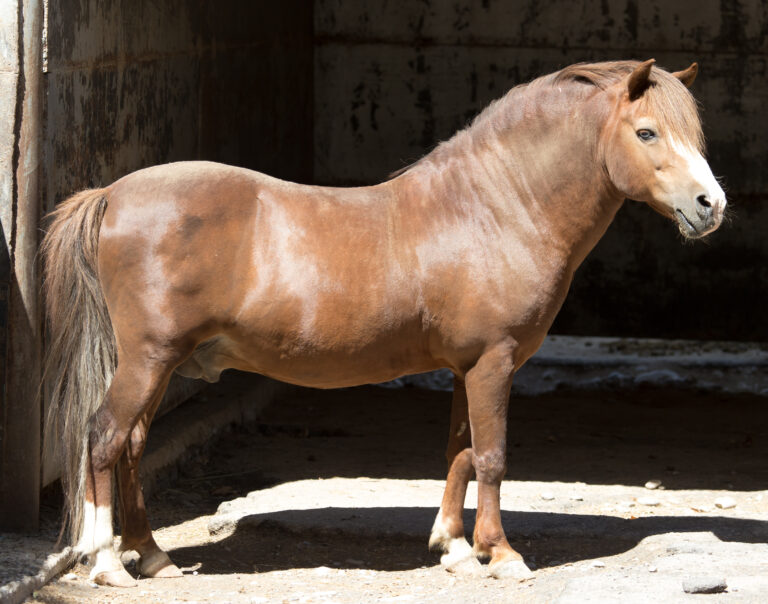
Lyme disease in horses is a commonly discussed and often controversial disease. In this episode of the Disease Du Jour podcast, Toby Pinn-Woodcock, DVM, DACVIM, provides a comprehensive overview of the disease, including clinical signs, testing recommendations, treatments, and vaccination protocols.
History of Lyme Disease
Pinn-Woodcock started the conversation with a brief history of Lyme disease. In the late 1970s, there was a group of about 50 children in the Lyme, Connecticut, region with juvenile arthritis recognized to be associated with a tick bite. In the early 1980s, researchers recognized Borrelia burgdorferi as the causative agent of what is now known as Lyme disease.
Pinn-Woodcock said early case reports of Lyme disease in horses began in the late 1990s, but practitioners have really started to learn more about how the disease affects horses in the last 15 to 20 years.
Lyme disease is most prevalent in regions where Ixodes ticks live. Ixodes scapularis ticks in the East and Ixodes pacificus ticks in the West can both carry Borrelia burgdorferi, but the disease is most prevalent in the Northeast.
Clinical Signs of Lyme Disease in Horses
Pinn-Woodcock said the clinical signs of Lyme disease in horses are controversial. “There is a study that describes what practitioners feel are clinical signs of Lyme disease. Those differ from what’s in the literature as far as conditions associated with Borrelia burgdorferi in the horse,” she said.
Pinn-Woodcock said horses with PCR-positive specimens have demonstrated clinical signs including inflammation in the eye and infection in the skin at the site of the tick bite. Neuroborreliosis, which is a neurologic form of Lyme disease, and nuchal bursitis, or “poll evil,” are also conditions in which Borrelia burgdorferi PCR-positive tissue has been identified.
Pinn-Woodcock noted some practitioners claim to see lameness, attitude changes, back soreness, shifting leg lameness, and a variety of other clinical signs associated with Lyme disease, “but unfortunately those conditions haven’t been able to be well-replicated in the very few infection trials that have been performed. Therefore, it’s hard to find strong evidence for that.” She emphasized that research is ongoing, and she expects we will learn more about the disease in horses as research progresses.
Testing Horses for Lyme Disease
Diagnostic testing for Lyme disease in horses can give veterinarians an idea of when the exposure occurred. “I feel that we can very reliably test a horse for exposure to Lyme disease,” Pinn-Woodcock said. “We have tests that do a good job of identifying the presence of antibodies produced after infection.”
Serology tests range from the Western blot assay to the ELISA test to the fluorescent bead-based multiplex assay. “The Western blot and the multiplex assay both have the ability to look at these different outer surface protein antibodies, which are the outer surface protein or OspA, OspC, and OspF,” Pinn-Woodcock said. “And OspA we believe is produced potentially early in infection because that’s the outer surface protein expressed by Borrelia in the tick gut and the horse’s immune system will see that outer surface protein potentially early in infection. However, we also are starting to recognize, especially now that we’re investigating the nuchal bursitis cases more, that it does seem like horses with chronic infection will also have high levels of OspA.” To further complicate matters, vaccines contain OspA antibodies.
“So, when you have elevated OspA, it can potentially reflect early infection, potentially chronic infection, or prior vaccination,” she said. “It’s really important to know your horse’s history and the vaccination history, particularly when you’re interpreting these tests.”
Pinn-Woodcock said the OspC antibody can be detected within three to five weeks of infection and the OspF antibody within five to eight weeks of infection. She said the OspF protein can hang around in the horse for months to years.
Treatment for Lyme Disease in Horses
Pinn-Woodcock noted that while it hasn’t been proven in the literature, it’s possible a horse’s clinical signs or lack thereof do not correlate with the magnitude of the antibody levels seen on serology tests. “Screening [healthy] horses for Borrelia can get you into a tough situation with deciding whether to use antimicrobials or not,” she said.
She continued by saying Borrelia burgdorferi in horses should always be a diagnosis of exclusion, because many of the clinical signs can be caused by other, more common etiologies. She gave the example of shifting leg lameness, which could also be caused by arthritis, musculoskeletal injury, vitamin E deficiency, or selenium deficiency.
She said if the practitioner has ruled out the other causes of clinical signs, tested the horse for exposure, and wants to initiate treatment, “we don’t have any evidence pointing us toward one treatment versus another.” She also noted a lack of strong evidence for efficacy of treatments.
Typical antimicrobials used to treat Lyme disease in horses include intravenous oxytetracycline or oral doxycycline or minocycline. Cephalosporins have been cited in the literature and used in some cases.
Pinn-Woodcock said once treatment has been initiated, practitioners can use the quantitative antibody assays to see if the horse is responding to treatment. “Seeing more than a 50% reduction in the magnitude of their antibody titers can support the fact that the horse’s immune system is responding to the treatment you’ve provided. That, in combination with resolution of clinical signs, may give you the confidence to stop treatment,” she said.
Vaccinations for Lyme Disease
Pinn-Woodcock said there are several Lyme vaccines on the market for dogs, but none of them are USDA-approved for use in horses and are, therefore, being used off-label. In doing so, practitioners are assuming the liability that if the horse has a reaction, they won’t receive support from the manufacturer. However, published research has shown some horses will respond to the various canine vaccines. Pinn-Woodcock added that some horses are nonresponders.
When horses do respond to vaccination, they usually only maintain a robust titer for a few months. Therefore, horses will need a booster for this vaccination at least every six months.
Pinn-Woodcock said she used a canine Lyme vaccine in practice and did not have any negative reactions. “While it may not help, it hasn’t seemed, in my opinion, to hurt the horses it’s been administered to,” she said.
On-Horse Protection and Pasture Management
Pinn-Woodcock described a few other strategies practitioners can recommend to clients to protect their horses from Lyme disease. These include topical insecticides, frequent grooming, reducing brushy pasture environments, and reducing habitats for other hosts of Borrelia, such as the white-footed mouse.
However, Pinn-Woodcock noted the efforts might be futile; surveys have indicated at least 60% of horses living in an endemic area have been exposed to Borrelia based on their antibody levels.
Final Thoughts
Pinn-Woodcock concluded the conversation by urging practitioners to remain open-minded about Lyme disease. She said owners often zero in on it, and practitioners must take a step back and rule out other conditions that could be causing clinical signs.
“Sometimes we have to make the most educated decision we can,” she said. “I sympathize with all the equine practitioners out there who are trying to navigate this topic with their owners and their patients.”
About Dr. Toby Pinn-Woodcock
Toby Pinn-Woodcock, DVM, DACVIM, is a member of the Veterinary Support Services team at the Cornell Animal Health Diagnostic Center and a clinician in Large Animal Internal Medicine Service at the Cornell Equine and Nemo Farm Animal Hospital. Pinn-Woodcock received her doctorate in veterinary medicine from the University of Wisconsin School of Veterinary Medicine in 2008, after which she completed a residency in large animal internal medicine at Cornell. She spent six years in private practice, which included equine ambulatory and referral practice, large animal production medicine, and companion animal practice. She returned to Cornell in 2018 in her current role at the AHDC and the College of Veterinary Medicine. Her areas of interest and research include large animal infectious disease and equine endocrinology.




